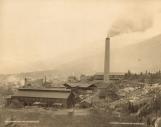1
The Hall Mining and Smelting Company Smelter.
1896
Nelson, B.C
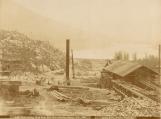
2
The prohibitive cost of transporting ore to American smelters, the introduction of lead ore tariffs entering the United States and the offer of a government bonus for building smelters in British Columbia encouraged the construction of a smelter in Nelson. Construction began on a site in the Rosemont area in October 1895. 25,000 bricks for the smokestack were brought from Colville to house the single water jacket-furnace. On January 14, 1896 the 100 ton smelter was blown in.
3
View of the Hall Mines Smelter
1898
Nelson, B.C
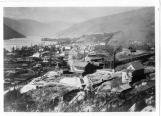
4
During the smelting process the ore was heated to a high temperature. The large quantities of coke required initially came from Wales and later Vancouver Island. Limestone, used for flux, came from Kaslo. The heavy metal sank to the bottom of the furnace and ran continuously into a large, brick-lined settling pot with two lips. The valueless slag drained from the upper lip into an iron-lined flume where the glasslike slag crumbled and shattered and was then swept away by a stream of water outside making the dump yards for the CPR. Meanwhile, the metaliferous matte eventually filled up the settling pot and ran out along a solid iron gutter to a series of matte moulds on a carriage.
5
Christmas at the Hall Mines Smelter
1903
Nelson, B.C
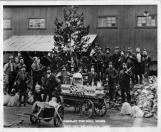
6
Hall Mines Smelter and Shipment of Silver Bullion
1896
Nelson, B.C

7
After cooling, the matte was crushed and bagged for export. Seven tons of ore were reduced to one ton of matte yielding 900 pounds of copper, 300 ounces of silver and 1/2 ounce of gold.
8
Hall Mines Smelter Crew
1903
Nelson, B.C
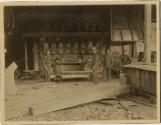
9
The Hall Mining and Smelting Company Limited Stock Certificate
1902
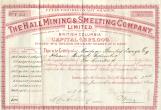
10
Group of Employees at the Hall Mines Smelter.
1900
Nelson, B.C
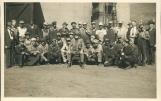
11
Group of employees at the Furnace, Hall Mines Smelter
1903
Nelson, B.C
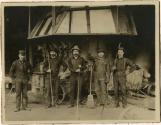
12
A second larger furnace, a roaster and a reverberatory plant were added in October, 1896. The refinery enabled further reduction of the matte to a product called 'blister copper' containing 98 percent copper. This was then exported to Swansea, Wales and Liverpool, England for separation of the metals by an electrolytic process.
13
Looking south and uphill to the Hall Mines Smelter.
1903
Nelson, B.C
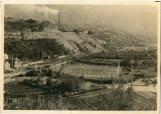
14
Hall Mines Smelter
1900
Nelson, B.C
